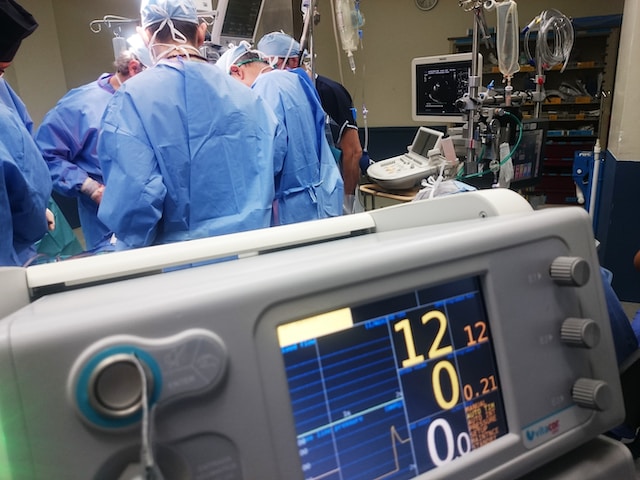In the United States, pursuing a medical degree as an international student is not a straightforward process. It entails a well-defined pathway that involves several steps before you can embark on your medical education journey. Instead of directly enrolling in a medical program, international students must first complete a bachelor’s program in a science-related field. This preparatory stage is commonly referred to as the “pre-medical” phase, and it plays a pivotal role in shaping future healthcare professionals.
Upon the successful completion of their undergraduate studies and meeting the specific academic requirements, international students are then eligible to apply for admission to a four-year medical program. This marks the beginning of their formal medical training, which ultimately culminates in the achievement of a medical degree. The comprehensive and rigorous nature of these programs ensures that aspiring physicians are well-prepared to meet the demanding challenges of the medical profession like study USMLE step 2, making this educational journey a crucial step towards becoming a qualified doctor in the United States.
The pre-medical program provides aspiring doctors with a strong foundation in the sciences, typically offering courses in subjects like chemistry or biology. It is during this phase that students acquire the essential knowledge and skills necessary for a successful medical career. This education equips them with a deep understanding of the fundamental principles of life sciences, human anatomy, and related areas, which are fundamental for medical practice.
A Complete Step-Guide FOr International Med School Students
Obtaining a residency position in the United States is a significant step for international medical graduates (IMGs) who have completed their medical programs in their home countries. The process can be complex, but with the right guidance and preparation, IMGs can successfully secure a residency position in the U.S. Here are eight important points detailing the steps to apply for U.S. residency programs:
Educational Requirements
To apply for a U.S. residency program, IMGs must have completed a medical degree that is equivalent to a Doctor of Medicine (MD) or Doctor of Osteopathy (DO) in the United States. It is crucial to ensure that your medical education meets the educational standards established by the Educational Commission for Foreign Medical Graduates (ECFMG). Most U.S. residency programs require that you’ve graduated from a medical school listed in the World Directory of Medical Schools.
USMLE Examinations
One of the fundamental requirements for international medical graduates is passing the United States Medical Licensing Examination (USMLE). This exam consists of three steps: USMLE Step 1, USMLE Step 2 Clinical Knowledge (CK), and USMLE Step 3. Step 1 assesses your knowledge of the basic sciences, while Step 2 CK evaluates your clinical knowledge, and Step 2 CS measures your clinical skills. A strong performance on these exams is essential for a successful residency application.
ECFMG Certification
ECFMG certification is mandatory for IMGs and verifies the authenticity of your medical degree. To obtain ECFMG certification, you must pass USMLE Step 1, Step 2 CK, and Step 2 CS. The ECFMG certification is crucial because it demonstrates your eligibility to participate in the National Resident Matching Program (NRMP) and the Electronic Residency Application Service (ERAS).
Clinical Experience
Clinical experience in the form of clinical rotations or observations in U.S. healthcare settings can greatly enhance your application. Observerships or clinical electives can provide you with hands-on experience within the U.S. medical system and allow you to secure strong letters of recommendation from U.S. healthcare professionals.
ERAS Application
The Electronic Residency Application Service (ERAS) is the platform through which you apply for U.S. residency programs. ERAS allows you to submit your application, including your academic and professional credentials, letters of recommendation, personal statement, and USMLE scores. Each year, the ERAS application cycle opens in June, and you should submit your application as early as possible to maximize your chances of securing interviews.
Letters of Recommendation
Strong letters of recommendation are essential for your application. It’s advisable to obtain letters from U.S. physicians who have directly observed your clinical skills. These letters should highlight your clinical abilities, work ethic, and interpersonal skills. In addition to these, academic references can also be valuable, particularly if you’ve completed clinical rotations in the U.S.
Residency Interviews
If your application is successful, you’ll receive interview invitations from U.S. residency programs. Prepare for these interviews by researching the programs, practicing your interview skills, and being ready to discuss your qualifications and motivations for pursuing a residency in the U.S. Keep in mind that interviews are a critical component of the residency matching process, so it’s important to make a positive impression.
The Match
The culmination of the residency application process is the National Resident Matching Program (NRMP) Main Residency Match. This is a system that helps to match applicants with available residency positions. You’ll need to create a rank order list of the programs you interviewed with, and program directors will create their list of preferred applicants. The NRMP then uses a computer algorithm to match applicants with programs. It’s important to note that not all applicants match with a program on their first attempt, and a certain percentage of positions go unfilled. If you don’t match, you can participate in the Supplemental Offer and Acceptance Program (SOAP) to secure a residency position that is unfilled in the initial match.
Conclusion:
International medical graduates who wish to pursue a residency in the United States must navigate a multi-step process that includes education equivalency, USMLE exams, ECFMG certification, clinical experience, the ERAS application, strong letters of recommendation, interviews, and the NRMP Match. It’s a competitive process, but with dedication, preparation, and persistence, IMGs can achieve their goal of securing a U.S. residency position and advancing their medical careers in the United States. Writing early to the international admissions office will help you understand the process better and you can get a clear perspective of what is expected in advance. You can come prepared to face all the challenges from your home country and still find a home-away from home while you pursue your dreams.







